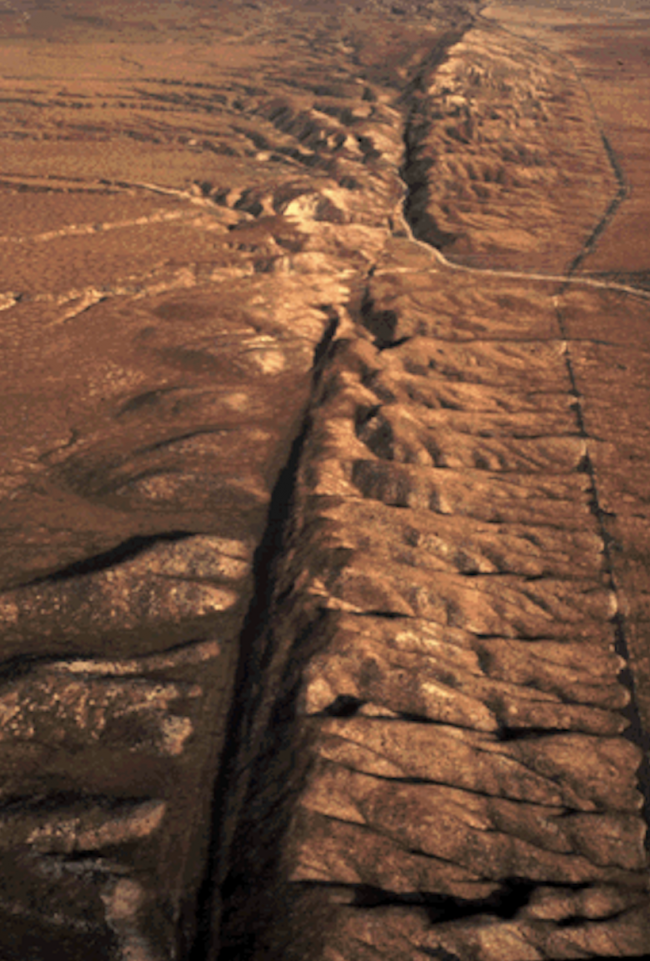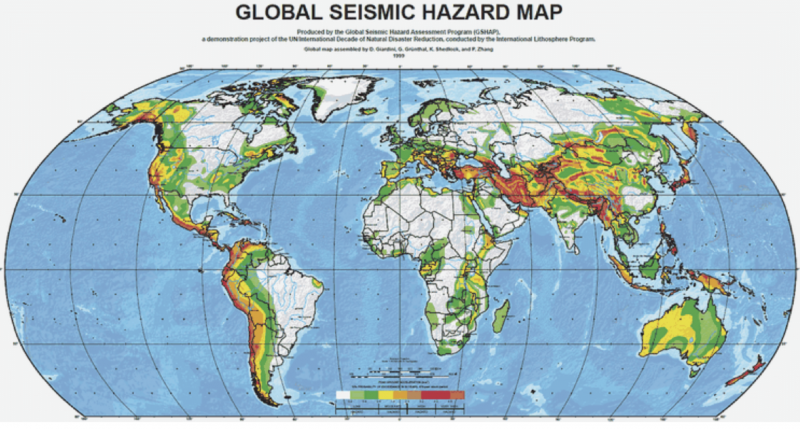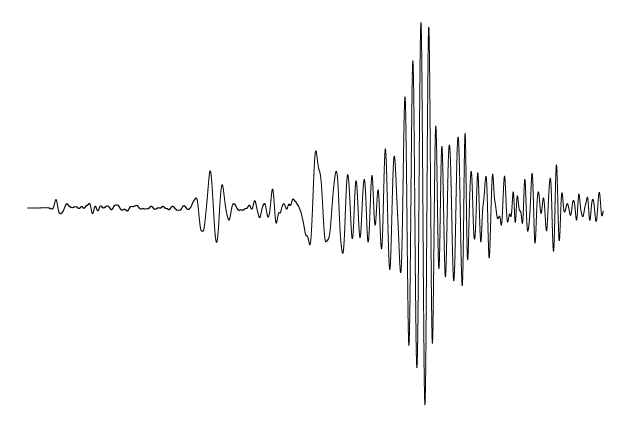Can we predict earthquakes now?
Can we predict earthquakes?
A pair of French researchers claim to have discovered the holy grail of seismology: a means of predicting major earthquakes hours before we feel them. If their discovery is real, will accurate and timely earthquake prediction become a reality? Possibly. It’s hopeful, because timely earthquake prediction would save lives and help protect critical infrastructure. So is it true? And, if it is, can we use this discovery to predict earthquakes?
Earthquake researchers Quentin Bletery and Jean-Mathieu Nocquet of Université Côte d’Azur in Géoazur, France, described their dramatic finding on July 20, 2023 in a paper published in the journal Science.
Before this, most experts had said earthquake prediction would never be possible because there was no preliminary sign an earthquake would occur until the ground actually started shaking. But Bletery and Nocquet said their analysis of 90 past earthquakes has suggested that:
… large earthquakes start with a precursory phase of slip …
And they said the “precursory slip” phase comes within two hours before the earthquake itself happens. That’s time enough for officials to provide warning in affected areas.
Is this “slip” real? That remains to be seen. The study still needs to be confirmed. And other researchers will no doubt be trying to duplicate and advance the work of Bletery and Nocquet.
What’s more, even if it is real, will the finding let us predict earthquakes? And, as Quentin Bletery told Scientific American:
[Our finding] doesn’t mean we know how to predict earthquakes. But it means that it’s physically possible.

Why didn’t we think we could?
At present we can’t predict earthquakes, despite the fact that geologists have sought a reliable earthquake prediction method for decades.
What’s needed is a prediction that comes not minutes before, but hours before the earthquake. It’s only on a timescale of hours that people can move themselves out of the earthquake zone, or at least to an open area, where they’re not likely to be injured or killed by falling debris.
And there are other issues, notably that making a system like that implied by the work of Bletery and Nacquet will require an expensive retooling of the GPS system. If it works at all, it’ll require the construction of an extensive GPS sensor network along major earthquake rupture faults. As explained in an article accompanying the paper in Science, the systems in place to monitor movement of earthquake faults aren’t currently sensitive enough to detect warning signals as they happen.
So implementing the techniques implied by this new discovery – if it’s real – will not be cheap.
Still, if it’s true, it’s a start that could ultimately save millions of lives. And the hope is that the discovery by the two French researchers will eventually lead to reliable and timely predictions. Even the prospect has seismologists anxious to know more. Seismologist Richard Allen at the University of California, Berkeley, who was not involved in the work, said in the Science article:
It’s just tantalizing. The whole idea of being able to predict the onset of [an] earthquake rupture is a really big deal.

How did they discover the ‘slip’?
So how did French earthquake researchers Quentin Bletery and Jean-Mathieu Nocquet make their discovery of a “slip” before an earthquake? The researchers analyzed very precise historical GPS data showing fault line movement in 5-minute increments. They specifically examined 48-hour periods before 90 different major earthquakes.
They discovered a recurring signal that appears long enough before an earthquake occurs that authorities will have time to issue a warning. According to the article in Science:
They found that on average, horizontal movements of the stations exponentially accelerated in a direction consistent with slow fault slip near the eventual earthquake nucleation point in the last two hours before the earthquake ruptures.
These scientists say the signs a major earthquake is coming emerge from the background about 110 minutes before the quake strikes.
To make sure their discovery wasn’t just a random occurrence, the researchers also analyzed 100,000 48-hour windows of GPS data that didn’t end in major temblors.
Despite finding a model to forecast seismic activity, the technology to use the technique isn’t in place yet. But the researchers believe it could be:
Although present instrumental capacities do not allow us to identify precursory slip at the scale of individual earthquakes, our observation suggests that precursory signals exist and that the precision required to monitor them is not orders of magnitudes away from our present capabilities.

More details from GeologyHub
The popular YouTube channel GeologyHub says the paper might represent “the most important scientific discovery in the field of geology during the past 20 years.”
In the GeologyHub video (below), the host presents a hypothetical example of how earthquake prediction might save lives. Imagine a 7.7-magnitude quake on the San Andreas Fault in California. A major quake occurs along it every 140 years on average. The prediction scheme would likely produce a handful of false alarms, as well as saving perhaps millions of lives when the Big One finally hits. According to the GeologyHub video:
During an average 140-year period one actual signal would be detected preceding a major earthquake along with an average of seven to eight false positives.
That is pretty great.
Hypothetically, people could be told for each of these 110-minute windows to simply move to a safe area which can withstand a possible earthquake, possibly in a field far away from where large objects could fall.
Has an earthquake ever been predicted?
Before this new discovery, the USGS was adamant that any useful prediction – any earlier than, say, a few minutes before an earthquake struck – was impossible. USGS says on its FAQ page:
Neither the USGS nor any other scientists have ever predicted a major earthquake.
We do not know how, and we do not expect to know how any time in the foreseeable future.
USGS scientists can only calculate the probability that a significant earthquake will occur in a specific area within a certain number of years.
There was a single case of what now appears to have been good luck, with regard to earthquake prediction. It happened in Haicheng, Liaoning, China, on February 4, 1975. There’d been foreshocks, and much of the city had evacuated before the earthquake, after an order from Chinese officials. Then a magnitude 7.5 earthquake – a very strong earthquake – did strike. So there was a prediction, and it did save lives.
But the 1975 Haicheng earthquake “prediction” – which was based on the preceding foreshocks – later was deemed to be a fluke.

Bottom line: A pair of French earthquake researchers claim to have discovered the holy grail of seismology: a means of predicting major earthquakes hours before they happen.











